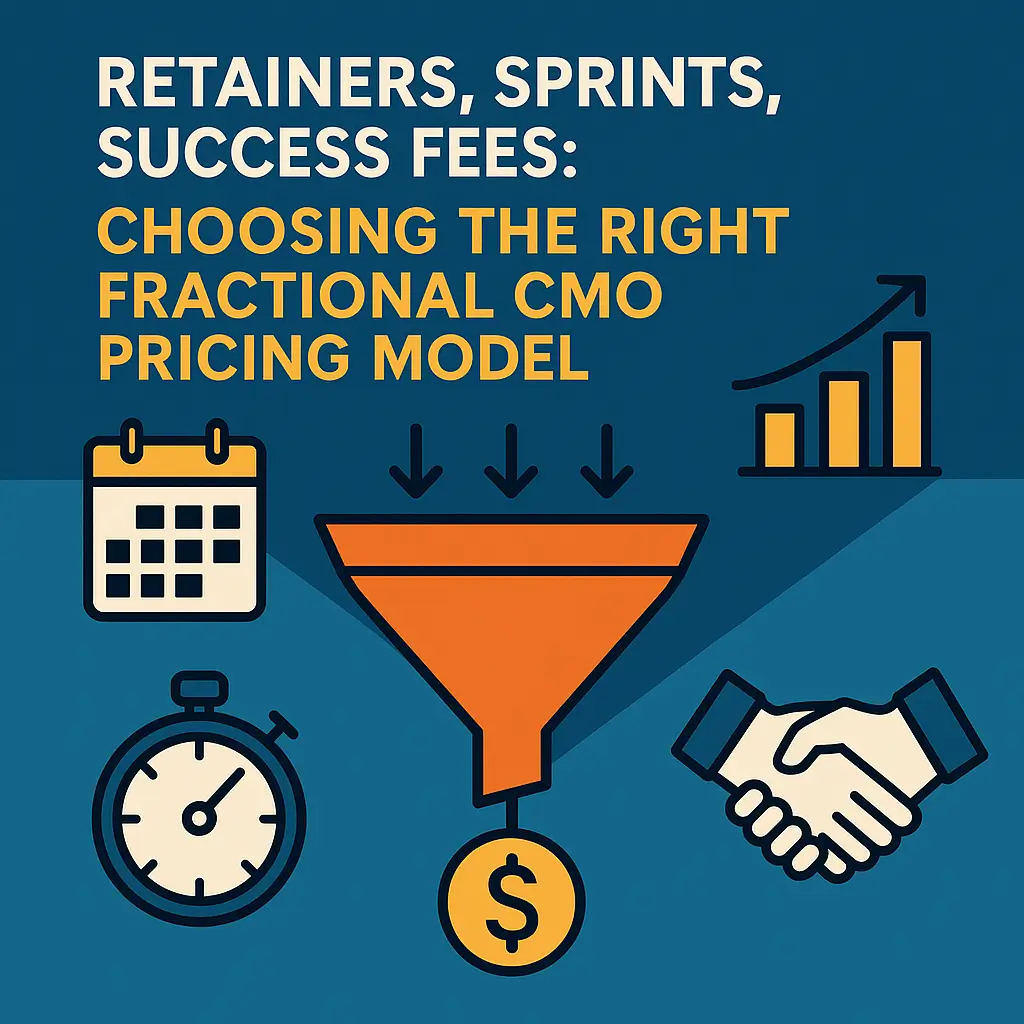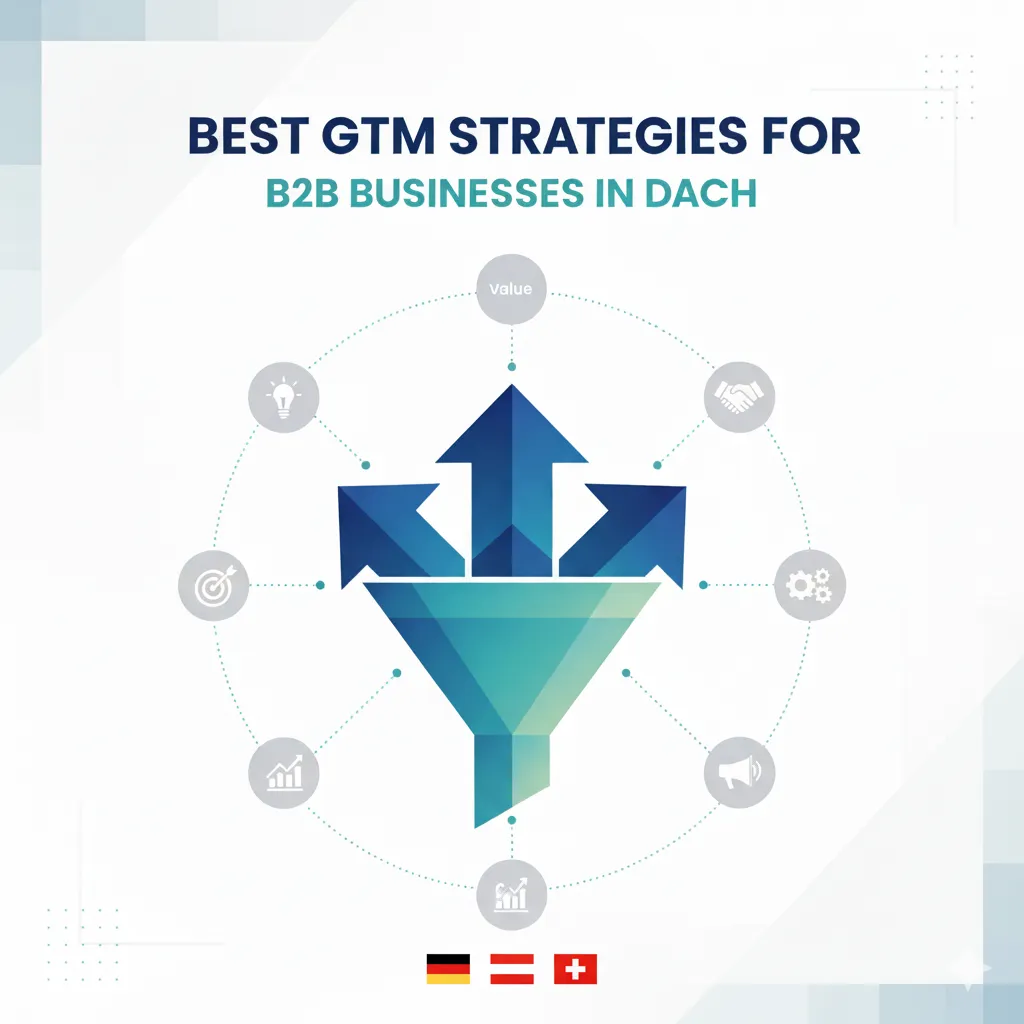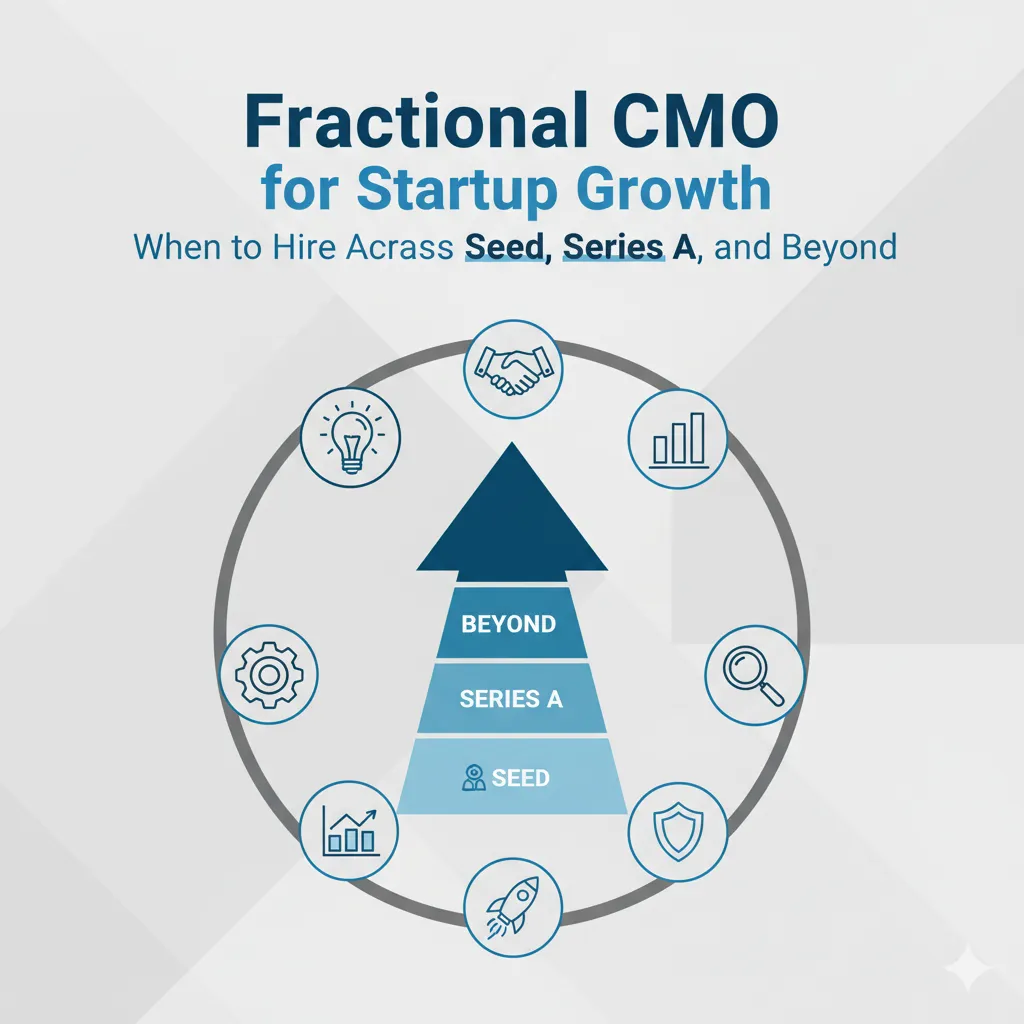Did you know that 68% of B2B companies are flying blind with their marketing? A striking new study reveals that fewer than one-third of businesses clearly distinguish between their buyer personas and ideal customer profiles, resulting in misaligned messaging and wasted sales efforts.
This confusion costs the average mid-market B2B firm over $800,000 annually in misdirected campaigns and elongated sales cycles. The disconnect happens because many organizations create detailed fictional characters (personas) without first establishing which companies actually need their solution (ICPs). While both tools aim to sharpen targeting, they serve fundamentally different purposes in the marketing ecosystem.
Understanding the buyer persona vs ideal customer profile distinction isn’t just marketing theory—it’s the difference between precisely targeted campaigns that resonate with decision-makers and generic messaging that falls flat with leads who were never qualified to begin with.
Contents
Key Takeaways
- Strategic complementarity – ICPs identify which companies to target while personas help you connect with individuals within those companies
- Companies using both tools report 30% shorter sales cycles and 25% higher conversion rates
- ICPs focus on organizational attributes like company size and revenue while personas address individual motivations
- Use ICPs for account prioritization and market segmentation; leverage personas for content creation and sales messaging
- Regular updates are essential – refresh ICPs biannually and personas quarterly to maintain alignment with market changes
Understanding ICPs and Buyer Personas
What Is an Ideal Customer Profile?
An Ideal Customer Profile (ICP) is a data-driven description of the type of company that would gain maximum value from your product or service while providing substantial value to your business. Rather than focusing on individuals, ICPs define organizations based on specific attributes that signal high potential for successful partnerships.
The components of a comprehensive ICP typically include:
- Firmographic data: Industry, company size, annual revenue, geographic location
- Technographic data: Current technology stack, software dependencies, integration needs
- Operational indicators: Growth rate, funding status, business model
- Pain points: Organizational challenges your solution addresses
For example, a B2B analytics platform might define their ICP as “Mid-market e-commerce companies with 50-200 employees, $5M-25M annual revenue, using legacy data systems, and struggling with real-time customer insights.” Creating a detailed customer profile like this helps focus marketing efforts on companies with the highest conversion potential.
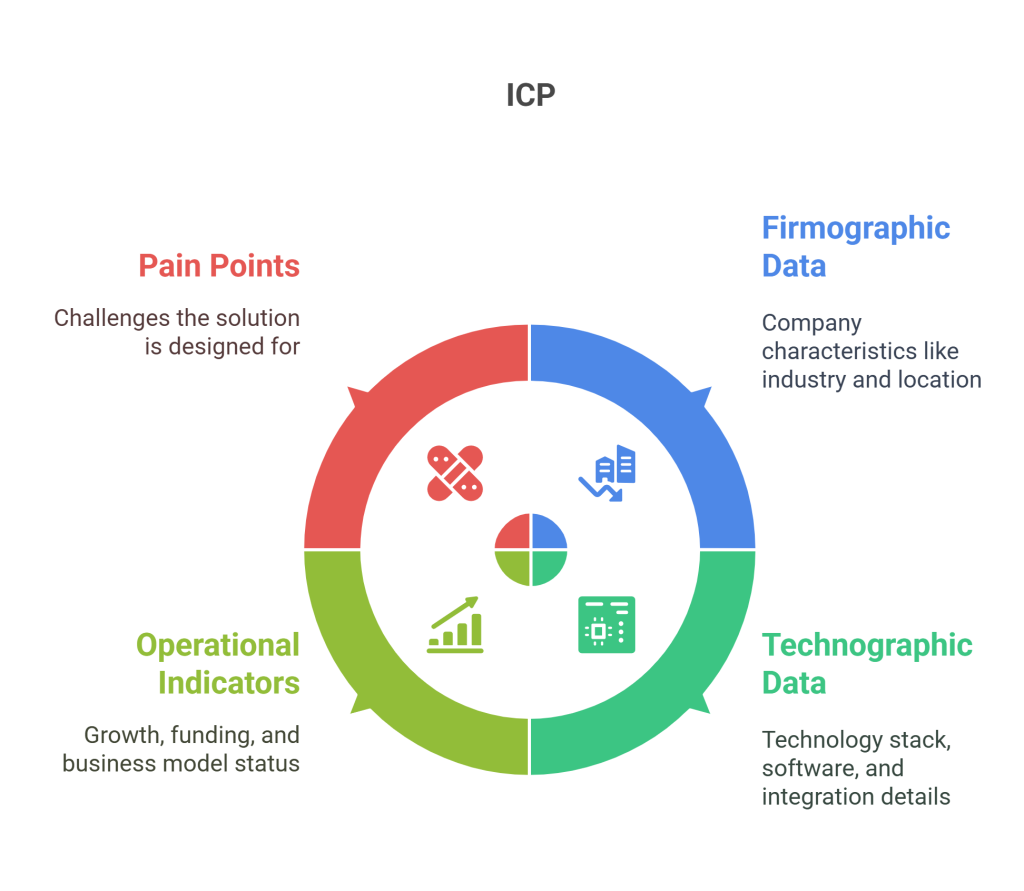
What Is a Buyer Persona?
A buyer persona is a semi-fictional representation of the actual people involved in purchase decisions within your target companies. While ICPs focus on organizations, personas zoom in on the human elements—the individuals who will evaluate, champion, or potentially block the adoption of your solution.
Effective buyer personas typically contain:
- Demographics: Job title, responsibilities, reporting structure, age range
- Psychographics: Goals, priorities, values, fears
- Behavioral patterns: Information sources, content preferences, decision criteria
- Day-to-day challenges: Personal and professional pain points
For instance, “Marketing Director Maria” might be a persona described as “A time-pressed marketing leader at a mid-size retailer, focused on demonstrating ROI, concerned about data integration challenges, and preferring case studies over technical documentation.” Personas help teams personalize communications for different stakeholders within target accounts.

Key Differences Between ICPs and Buyer Personas
Scope and Focus
The fundamental difference between these tools lies in their unit of analysis. ICPs examine companies with an organizational lens, evaluating whether the business entity as a whole is a good fit. Buyer personas, by contrast, focus on individuals within those organizations, helping you understand the human side of purchasing decisions.
This distinction matters because B2B purchases typically involve multiple stakeholders. Your product might perfectly address a company’s needs (ICP match), but if your messaging doesn’t resonate with the specific concerns of key decision-makers (persona alignment), you’ll struggle to close deals.
Purpose and Applications
ICPs and buyer personas serve different strategic purposes in your marketing and sales processes:
| ICP Applications | Buyer Persona Applications |
|---|---|
| Market segmentation and targeting | Content creation and messaging |
| Lead qualification and scoring | Sales conversation frameworks |
| Territory planning | User experience design |
| Product development roadmaps | Customer support approaches |
Companies that align these applications report significant improvements in marketing efficiency. Research shows businesses using both tools experience 35% higher win rates and reduce customer acquisition costs by nearly 30%.
When to Use Ideal Customer Profiles
For Strategic Planning
ICPs are particularly valuable when making high-level decisions about market focus and resource allocation. They help answer fundamental questions like “Which industries should we target?” and “Where will our solution create the most value?”
Companies entering new markets or launching new products should start with ICP development to avoid costly misdirection of sales and marketing efforts. Data shows firms with clearly defined ICPs achieve 68% higher annual growth rates compared to those with poorly defined targeting.
For Sales Efficiency
Sales teams use ICPs to qualify prospects before investing significant time in pursuit. By comparing incoming leads against ICP criteria, reps can quickly determine whether a prospect merits full engagement or should be deprioritized.
This qualification process dramatically improves sales productivity. Organizations that systematically screen opportunities against their ICP report 40% fewer wasted sales cycles and 55% higher conversion rates on first meetings.
When implementing account-based marketing strategies, ICPs become essential for identifying target accounts worth pursuing with personalized campaigns. The pain point discovery process helps refine these profiles further.
When to Use Buyer Personas
For Content Marketing
Buyer personas shine when developing content strategies that connect with specific stakeholders. Understanding that the CFO, CMO, and IT Director will each have different concerns about your solution allows you to create targeted resources addressing each perspective.
Marketing teams can map content topics to persona pain points, creating materials that address specific challenges. This persona-based approach yields measurable results—companies report 73% higher open rates and 50% more lead conversions with persona-aligned messaging.
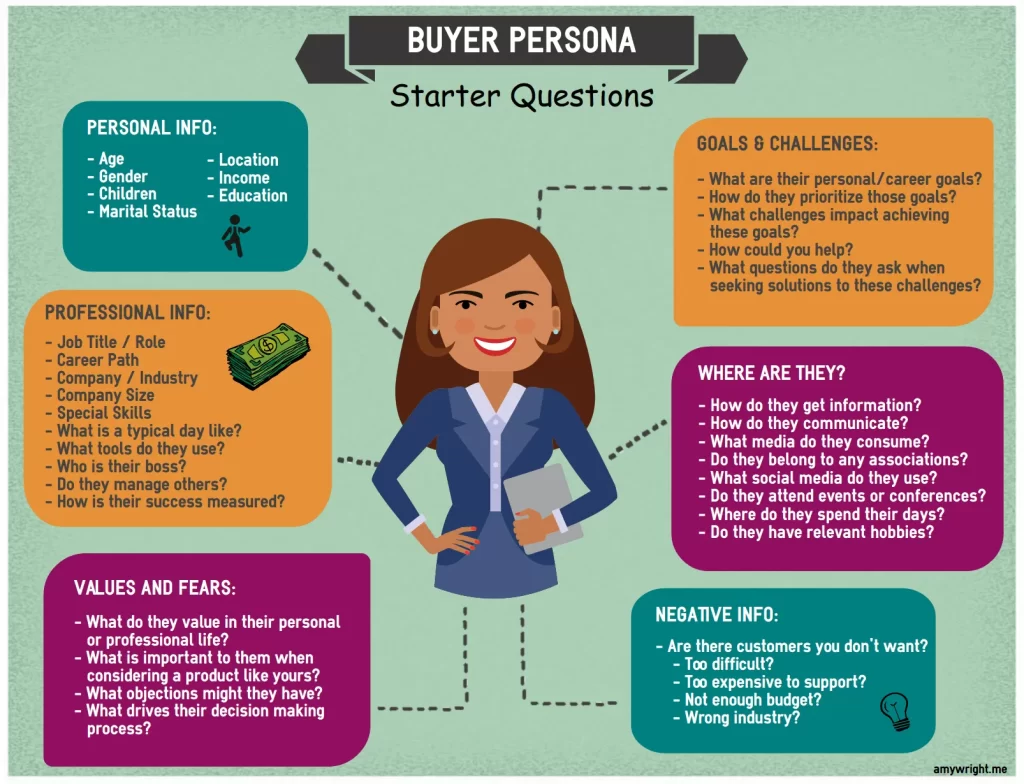
For Sales Conversations
Sales representatives leverage personas to customize their approach when engaging different stakeholders. A technical buyer might need detailed feature explanations, while a business buyer wants to hear about ROI and implementation timelines.
This personalization extends to objection handling. Knowing in advance what concerns different personas typically raise allows sales teams to prepare compelling responses rather than being caught off-guard.
Companies with German-speaking markets often need to create localized personas that account for cultural differences in decision-making.
Building an Integrated Approach
The Sequential Method
The most effective organizations use a sequential process that starts with ICP development and flows into persona creation:
- Define your ICP based on data from successful customer relationships
- Identify key roles within those ideal customers who influence purchasing
- Develop personas for each influential role
- Create targeted content and sales approaches for each persona
- Regularly update both ICPs and personas as markets evolve
This integrated approach ensures your team knows both which companies to target and how to effectively engage the people within them.
Cross-functional Collaboration
Developing effective ICPs and personas requires input from multiple departments. Sales brings frontline insights about customer objections, marketing contributes engagement data, product teams understand feature value, and customer success knows what drives retention.
Organizations that facilitate regular cross-department workshops to refine these tools report 40% better alignment between sales and marketing, leading to more consistent messaging and higher close rates.
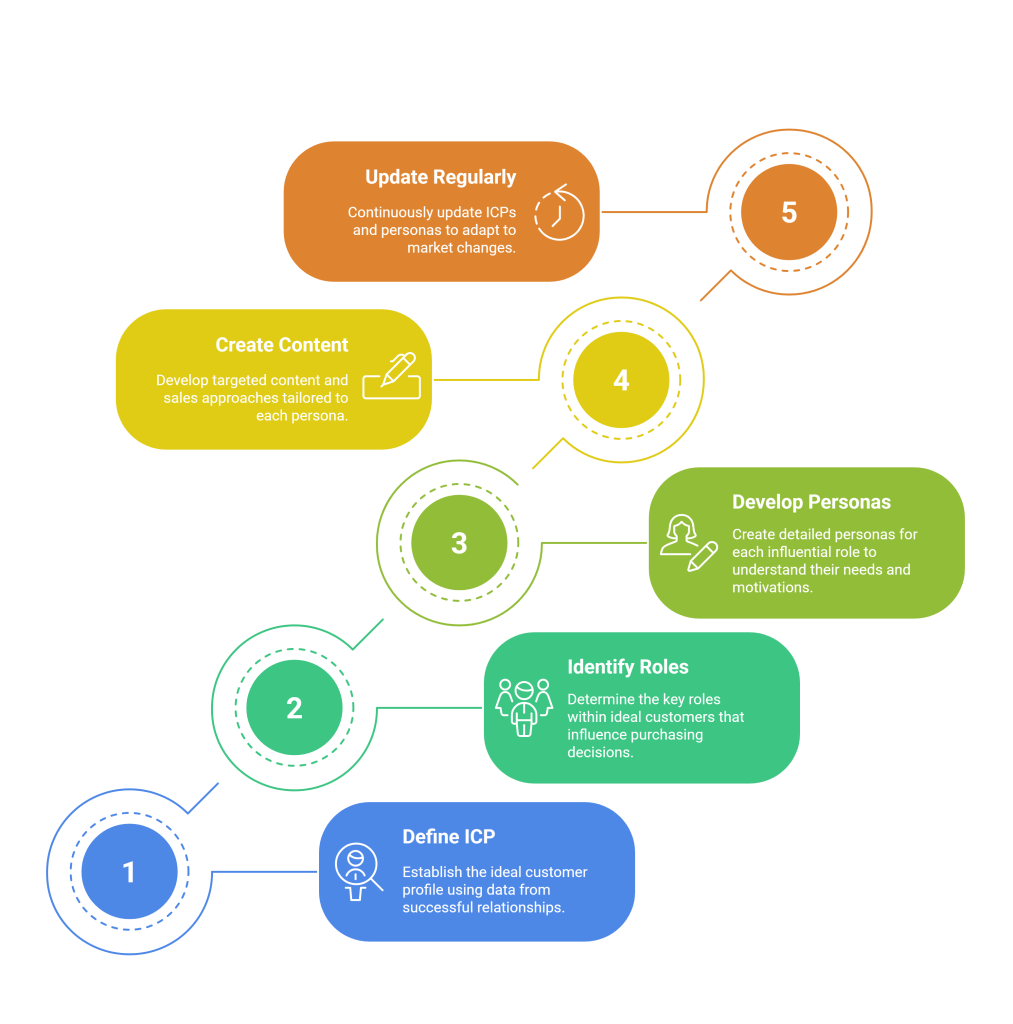
Case Study: SoftTech Solutions
SoftTech Solutions, a mid-market analytics provider, implemented an integrated ICP/persona strategy with impressive results. They first defined their ICP as “Healthcare organizations with 200-1,000 employees struggling with regulatory compliance reporting.” They then identified three key personas: “Operations Officer Olivia,” “Compliance Manager Carlos,” and “IT Director Ian.”
By aligning marketing campaigns and sales approaches to address the specific concerns of each persona within their target ICP companies, SoftTech reduced their sales cycle by 45% and increased average deal size by 32% within six months.
Common Mistakes to Avoid
Creating Personas Before ICPs
Many companies make the mistake of developing detailed personas without first establishing a clear ICP. This leads to creating content for people who work at companies that aren’t good fits for your solution—a fundamental misalignment that wastes resources.
Always establish which companies you should target before defining the individuals within those companies.
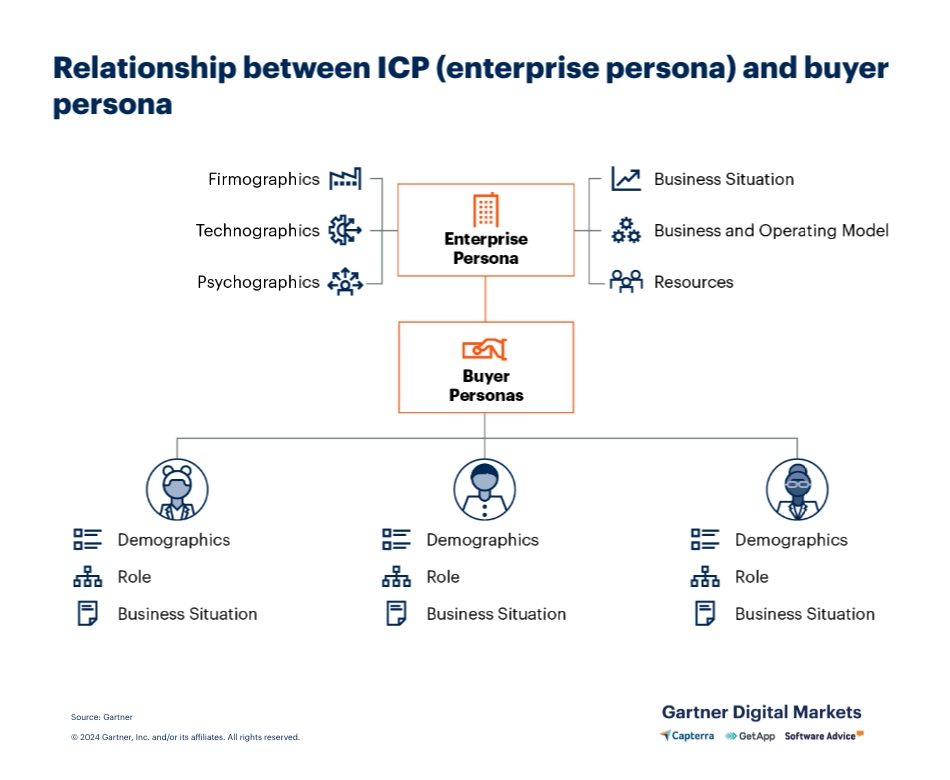
Static Profiles and Personas
Markets evolve, and so should your targeting tools. ICPs and personas should be living documents that get updated as you gather new customer insights and as market conditions change.
Schedule regular reviews—quarterly for personas and bi-annually for ICPs—to ensure these tools remain accurate reflections of your best opportunities.
Overly Generic Descriptions
Vague ICPs like “mid-size companies with growth challenges” or generic personas like “marketing managers who want better results” lack the specific details needed to drive effective targeting.
Effective profiles and personas include concrete attributes that allow for clear qualification and precise messaging. Include quantifiable characteristics whenever possible.
FAQ
Can a company have multiple ICPs?
Yes, many businesses have 2-3 distinct ICPs, especially when serving different market segments or offering multiple product lines. However, each ICP should be clearly defined and prioritized. Having too many ICPs can dilute focus and lead to the same targeting problems as having none at all.
How many buyer personas should we create?
Most B2B companies find that 3-5 personas cover the major stakeholders involved in their purchase process. Focus on the roles with the most influence rather than trying to create personas for every possible title. Quality trumps quantity when it comes to persona development.
How do we gather data for creating accurate ICPs and personas?
The best data comes from multiple sources: CRM analysis of successful deals, customer interviews, sales call recordings, win/loss analysis, and survey data. Talk directly with customers about their buying process and decision criteria whenever possible, as this provides insights you can’t get from quantitative data alone.
Should startups invest in developing ICPs and personas?
Absolutely. Startups benefit enormously from clear targeting, as they can’t afford to waste resources on poor-fit prospects. Early-stage companies should create simplified versions of both tools based on their initial customer interactions, then refine them as they gather more market data and feedback.
Sources
- Total Product Marketing – ICP vs. Buyer Persona
- Developer Marketing – Ideal Customer Profile vs. Buyer Personas
- iCanpreneur – Ideal Customer Profiles vs Buyer Persona Key Differences
- Tabular – ICP vs Buyer Persona
- Frictionless – Ideal Customer Profiles vs. Buyer Personas
- Yesware – Ideal Customer Profile vs. Buyer Persona


